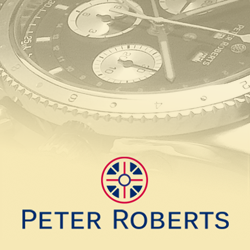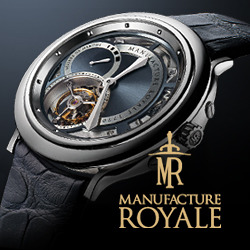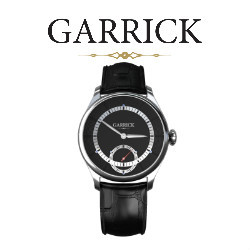Why launch new designs if your back catalogue is rich with hits?
When words are co-opted for specific uses, it leaves us with a slight dilemma: how does one describe exact replicas of classic watches, brought back to life by the original companies, when “replica” now means “fake”?
It’s a waste of a perfect term, because nearly every brand with a history worth exploiting has revived its classics from the past. A practice born in the 1990s, reissuing iconic models – as of the 21st Century – a pursuit that’s proliferating. But calling them “replicas” … the counterfeiters have turned that perfectly descriptive, innocent word into their seemingly polite term for “forgeries.” Please – keep the two separate in your mind, as you learn of the kosher surrogates for long-out-of-production masterpieces.
Choosing which watch to reissue would seem to demand a milestone model as a the only worthy subject of reincarnation; no sane maker would revive a flop. But some brands don’t have to think at all about reissuing their classics, because they never let them go out of production.
Many will live to mark a century, like Cartier’s immortal Tank, born during WWI and which has never known retirement. Rolex has a half-dozen, among them the Explorer, the Submariner and the GMT, that have been in uninterrupted production for more than 50 years. The Patek Philippe Calatrava is an horological perennial since 1932, Breitling’s Navitimer has known no respite since 1952. Their makers need never turn to the thesaurus to describe those pieces because they’ve never required revivification.
In defining what qualifies as a legitimate replica, it applies to any watch that was dropped from the catalogue and revived after a period of dormancy. During the past 20 years, brands including Longines, Omega, Eterna, Bulova, Rado, Hamilton, Vacheron Constantin, Glashutte Original, TAG-Heuer, Girard-Perregaux, Glycine, Breitling, Piaget, Tudor, Zenith, Baume et Mercier, Jaeger-LeCoultre, IWC and a few dozen others have re-introduced heritage pieces. Even Swatch – which only turns 30 next March and is therefore barely old enough to be used in the same sentence as “heritage” – has launched a series of ultra-simple models that recall the first.
Because of the ever-increasing number of watch histories available, and thanks to the watch-dog aspect of the internet, the watch companies know that added scrutiny will be applied by voluble, pedantic watch enthusiasts. To prevent criticism, they try to keep the changes to a minimum. But even the wisest of manufacturers commit damning blunders: one maker brought back a replica diving watch that can’t be used for diving, while another produced a replica of a watch designed and known for its antimagnetic properties, but fitted a glass back that rendered it no more immune to magnetism than a normal timepiece.
However slavishly the brands want to adhere to the original watch, as do those producing nearly all of the quality reincarnations, at least two changes are needed to “modernise” them. The trick is to undertake this in a manner that respects the original. First and most likely, the reissued timepiece will undergo a change of movement, simply because it is not viable to recreate the original calibre when, in all likelihood, nothing remains of the tooling. In extreme cases, like Hamilton’s Ventura – which was the world’s first electric wristwatch – the late 1990s reissues were offered with modern quartz movements.
Later, in a display of irony rarely seen from the Swiss, the Ventura was even issued with a mechanical movement, which is a bit like McDonald’s creating a vegetarian Big Mac. Purism aside, the Ventura remains one of the most successful of all the revivals. It’s still in the catalogue, thanks to Elvis Presley wearing one, the characters in Men In Black wearing them, and the public’s taste for cool retro seeming to be permanent.
As for the second change, if the model being revived is one that was smaller than 36mm back in the day, the manufacturer must “upscale” the case size. Thanks to two replicas of the early 1990s, the median size for a man’s watch has crept up from 32-36mm to 38-42mm, while even larger watches are not uncommon for men without the wrist diameters to manage them. Think Sylvester Stallone, and you have the poster child for oversized timepieces.
It was Stallone who almost single-handedly popularised an utterly obscure watch from the 1930s-1950s that was issued as a limited edition in Italy in 1993. The watch was the Panerai diving model devised for the Italian Navy’s underwater saboteurs, then known only to serious wristwatch collectors (of which there were achingly few 20 years ago).
Experts differ about how many were made for military before the civilian replica appeared – certainly it was only in the hundreds – but now Panerai stands as one of the fastest-growing, most coveted watch brands in the world. From a limited edition of a few thousand pieces aimed at Italian enthusiasts, it produces around 45,000 watches a year, and they start at Rolex prices. All it took was Stallone wearing it in a few films, another given to his buddy Arnold to wear in Eraser, and the brand was snapped up by the people who happen to own Cartier.
If this was enough to inspire the entire watch industry to look to historical models that the enthusiasts wanted to buy as new, the IWC Portuguese of the same periods as the Panerai – born in the 1930s and revived in the 1990s – made it two-for-two. Unlike the inescapable, unbridled, testosterone-dripping Panerai, the IWC is of equally impressive dimensions, but its mien is dressy.
If the original was based on a full-sized pocket watch, making it something of a rarity when nearly all other watches of the day were barely the size of a 50p coin, the current circa-44mm piece almost looks normal by today’s standards. Like the Panerai, the original has sired a family that includes chronographs, tourbillons and others that weren’t available 75 years ago, so the hardcore will stick to the reissues that most closely resemble the originals.
Jaeger-LeCoultre nailed this perfectly with the recent reissue of the evergreen Reverso, but in the exact guise of the original: only the name “Reverso” on the dial, no complications, not even a seconds hand, the “Grand Reverso 1931” replica already changes hands at a premium.
Other hot replicas to consider this year – they tend to be produced as limited editions – include Glycine’s gorgeous reissue of the 1953 Airman multiple-time zone watch with 24-hour dial, Rado’s HyperChrome Golden Horse which looks so utterly 1957 that you’ll want to go out and buy a DVD of The Bridge on the River Kwai, Tissot’s Heritage Visodate Automatic Seastar with 1960s F1-driver-style drilled bracelet and Vacheron Constantin’s exquisite Malte recalling the earliest days of the wristwatch.
All are handsome, while unlike a mint original, all are readily available, but above everything else, they kinda make you wish the Braun/Apple/B&O design ethos never happened.
(Brummell, 2012)












